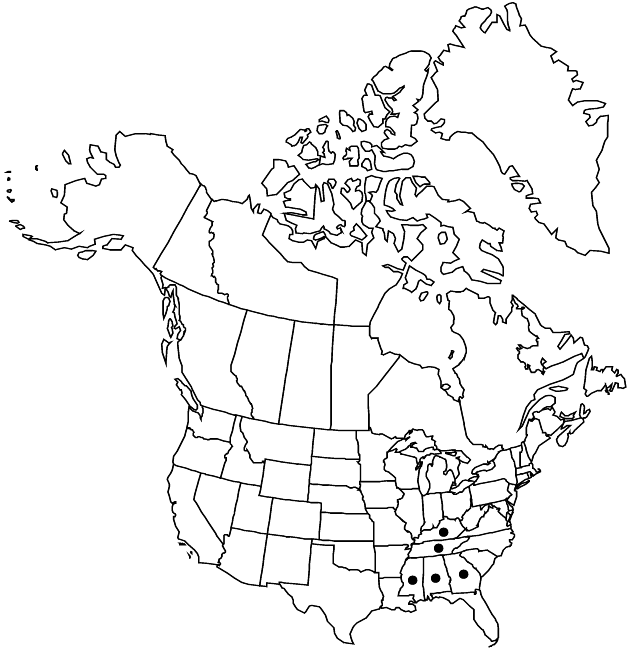Astranthium integrifolium
Trans. Amer. Philos. Soc., n. s. 7: 312. 1840.
Common names: Eastern western-daisy
Endemic
Basionym: Bellis integrifolia Michaux Fl. Bor.-Amer. 2: 131. 1803
Revision as of 20:49, 29 July 2020 by imported>Volume Importer
Annuals (biennials?), usually fibrous-rooted. Stems usually 1, erect to decumbent-ascending. Leaves: basal and proximal cauline 30–60 × 7–22 mm. Involucres 3.5–6 mm. Ray-florets (8–) 16–26; corolla laminae white, occasionally drying with bluish midstripe abaxially, (6–) 8–17 mm. Disc-floret corollas 2.5–3.7 mm. Cypselae (1.4–) 1.6–2 (–2.2) × 0.9–1.1 mm, faces minutely papillate-pebbly, linear striations barely discernible, usually glabrous, sometimes sparsely glochidiate-hairy distally. 2n = 8.
Phenology: Flowering Apr–Jun(–Jul).
Habitat: Rocky (limestone) banks and ridges, alluvial fields, stream banks and terraces, open juniper woods, glades, roadsides
Elevation: 50–300 m
Distribution

Ala., Ga., Ky., Miss., Tenn.
Discussion
Selected References
Lower Taxa
None.
"narrower" is not a number."[" is not declared as a valid unit of measurement for this property."]" is not declared as a valid unit of measurement for this property.
... more about "Astranthium integrifolium"
introrse +
connate +
distinct +
herbaceous +
scarious +
hirsute +
papillate +
continuous +
decurrent +
1-nerved +
spatulate-obovate +
ribbed +
stigmatic +
persistent +
absent +
Eastern western-daisy +
drying +
drying +
absent +
2-nerved +
dimorphic +
staminate +
straight +
papillate-pebbly +
distinct +
proximal +
1;5 +
bisexual +
dispersed +
Rocky (limestone) banks and ridges, alluvial fields, stream banks and terraces, open juniper woods, glades, roadsides +
singly +
indeterminate +
surrounding +
hemispheric;campanulate +
petiolate +
alternate +
spreading +
deltate +
hyaline +
toothed +
thin-herbaceous +
inconspicuous +
subequal +
bluish +
2-carpellate +
inferior +
attached +
anatropous +
absent +
coroniform +
tough +
thick +
absent +
connate +
persistent +
appressed +
distinct +
falling +
unequal +
Trans. Amer. Philos. Soc., n. s. +
1840 +
pistillate +
absent +
fertile +
epaleate +
pitted +
conic +
fibrous +
exalbuminous +
modifed +
Endemic +
alternate +
branched +
discernible +
lanceolate-acute +
2-branched +
glabrous +
Astranthium integrifolium +
Astranthium +
species +
tubular-funnelform +
much shorter +
fibrous-rooted +
annual +